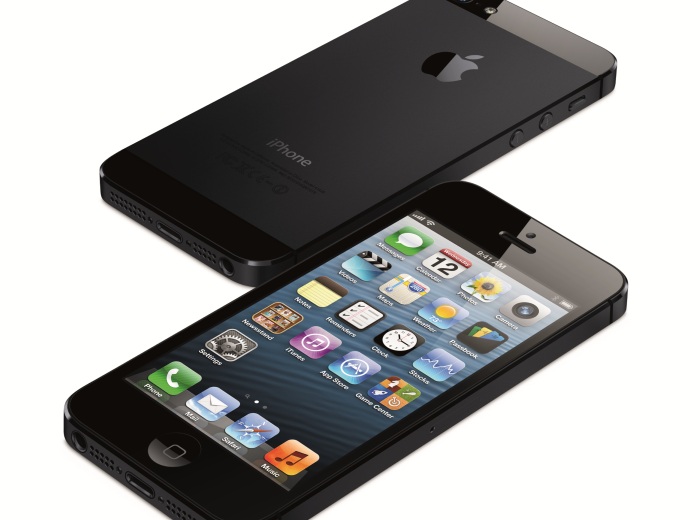Telecom & Wireless
Beyond Market Share: Apple iPhone Takes Over Half of Smartphone Profits -- for Now
Published:
Last Updated:
Taking market share or losing market share is one key metric over how popular a product is. What happens if that market share does not translate to profitability? In the finicky world of smartphones, taking market share might not be as important to the companies making them if their profitability measures and operating margins are not keeping up. It turns out that Apple Inc. (NASDAQ: AAPL) is winning on the profitability side, hands down, with the iPhone variations including the iPhone 5. Samsung is hot on its heels when it comes to profitability. The report actually has some mixed news for Nokia Corp. (NYSE: NOK), but only brings up more doubt and questions for BlackBerry Ltd. (NASDAQ: BBRY).
Canaccord Genuity’s Michael Walkley has issued a new analyst report showing that Apple earned 53% of the global operating profits in the smartphone market for the second quarter of 2013. The monthly handset survey shows that Samsung earned 50% of the profits. If you wonder how this would add up to 103% when 100% is the maximum, it is because of operating losses from smaller scale competitors.
During the first quarter of 2013 Apple Inc. (NASDAQ: AAPL) earned 57% of all operating profits, and its only smartphones are iPhone variations. Samsung earned 43% of the profits in smartphones in the first quarter, so its second-quarter jump is more than impressive. The largest negative share of the industry operating loss for the second quarter came from Motorola, which was 2%.
Walkley’s wireless store surveys and recent earnings reports are indicating an increasing sales mix of LTE smartphones in developed markets. They also show ramping sales of affordable 3G smartphones replacing feature phones in emerging markets, particularly China. That may not be good news for Apple, particularly when you consider that the firm’s note is showing that Chinese OEMs gained smartphone market share during the second quarter as emerging market smartphone growth outpaced higher-end smartphone sales in mature markets.
Today’s report comes on the heels of Apple now taking second place when it comes to customer satisfaction. Apple also has been dealing with fresh labor condition woes at another of its suppliers. We recently showed that Samsung’s earnings could be shown in a paragraph or so.
Sales of the Galaxy S4 have been weaker than anticipated, but Samsung maintained its leading share of the smartphone market and increased its share of industry profits during the second quarter of 2013. Walkley’s July surveys showed that the Samsung GS4 was the top selling smartphone at Verizon, Sprint and T-Mobile and was the number-two selling smartphone at AT&T. Other top-selling models included the iPhone 5 at all four tier-one carriers, followed by the HTC One at AT&T and Sprint, the Sony Xperia Z at T-Mobile and the Galaxy S III at Verizon.
Walkley said:
We estimate Samsung shipped 72.5M smartphones during the second quarter, an increase from the very strong 69.7M smartphones shipped during the first quarter, resulting in Samsung capturing an impressive 50% of handset industry profits. Further, despite lower iPhone 5 sales and a stronger mix of legacy iPhone 4S/4 sales during Q2/13, we estimate Apple maintained its leading share of industry profits at 53%.
Walkley points out that BlackBerry, Nokia and Motorola posted operating losses, but he does note that this industry profit analysis excludes this group gaining larger share of the smartphone market due to lack of available profit metrics.
The July surveys brought similar trends to the June surveys, with the Galaxy S4 and iPhone maintaining dominant share of smartphone sales trends. The Nokia Corp. (NYSE: NOK) Lumia 1020 at AT&T received very positive feedback from store representatives, but that smartphone just launched and Walkley believes that it is too early to calculate sell-through trends.
Bad news is here for the RIM and BlackBerry Ltd. (NASDAQ: BBRY) crowd. Walkley said, “For BlackBerry, our surveys indicated very soft US Z10 and Q10 sales, sharply declining BB7 sales due to Android competition, and weak initial Q5 sales.”
BlackBerry Ltd. (NASDAQ: BBRY) is actually up 1.5% on Wednesday, but its stock is a tiny fraction of its old days of glory, and its 52-week range is $6.22 to $18.32. This company’s delay of the BlackBerry 10 could end up signaling the end of what was a great product. Palm had a great product and it had an early-mover advantage, but you can only buy Palm phones now in resale and antique shops.
The average American spends $17,274 on debit cards a year, and it’s a HUGE mistake. First, debit cards don’t have the same fraud protections as credit cards. Once your money is gone, it’s gone. But more importantly you can actually get something back from this spending every time you swipe.
Issuers are handing out wild bonuses right now. With some you can earn up to 5% back on every purchase. That’s like getting a 5% discount on everything you buy!
Our top pick is kind of hard to imagine. Not only does it pay up to 5% back, it also includes a $200 cash back reward in the first six months, a 0% intro APR, and…. $0 annual fee. It’s quite literally free money for any one that uses a card regularly. Click here to learn more!
Flywheel Publishing has partnered with CardRatings to provide coverage of credit card products. Flywheel Publishing and CardRatings may receive a commission from card issuers.
Thank you for reading! Have some feedback for us?
Contact the 24/7 Wall St. editorial team.